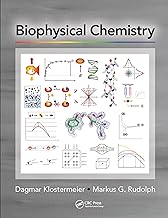Summary of "Biophysical Chemistry 2018 - Lecture 2"
Summary of “Biophysical Chemistry 2018 - Lecture 2”
This lecture focuses on foundational concepts in biophysical chemistry, particularly relating to protein structure, molecular interactions, and statistical thermodynamics, with an emphasis on the Boltzmann distribution as a central theme. The instructor integrates discussion, Q&A, historical context, and theoretical explanations to build intuition about molecular behavior in biological systems.
Main Ideas and Concepts
1. Review and Context of Biophysical Chemistry
- Proteins are complex molecules described by atomic coordinates; understanding them requires organizing this complexity.
- Amino acids and peptide bonds are fundamental building blocks; a “gut feeling” about their properties and degrees of freedom (especially torsions) is essential.
- Protein structure is hierarchical: sequence → structure → function.
- Histidine is a special amino acid due to its pKa near physiological pH, making its charge state variable.
- Chirality matters: glycine is achiral; D-amino acids rarely integrate well into natural proteins.
- Peptide bonds are planar, mostly in the trans conformation, except proline which often adopts cis.
- Protein folding is driven by physics, not the ribosome; native states correspond to lowest free energy.
2. Methods of Protein Structure Determination
- X-ray crystallography: first and still a major method.
- NMR spectroscopy: provides distance restraints in solution but is complex and less popular for large proteins.
- Neutron scattering (e.g., European Spallation Source): interacts with nuclei, complementary to X-rays.
- Computational modeling is rapidly improving and increasingly trusted for predicting protein structures.
- Super-resolution microscopy is not yet sufficient for atomic-level protein structure.
3. Molecular Interactions and Quantum Chemistry
- Covalent bonds arise from electron orbital interactions; electrons repel at very short distances.
- Long-range weak attractions (London dispersion forces) arise from induced dipoles fluctuating in atoms.
- Quantum chemistry is the fundamental theory but impractical for large proteins due to computational complexity.
- Classical force fields approximate atoms as charged particles with parameterized interactions:
- Bonds
- Angles
- Torsions
- Electrostatics
- Lennard-Jones potentials
- Lennard-Jones potential approximates repulsion and attraction with (1/r^{12}) and (1/r^{6}) terms.
- Hydrogen bonds and water’s tetrahedral hydrogen bonding network are crucial for protein folding and stability.
- The hydrophobic effect arises because water maintains hydrogen bonds by reorienting around nonpolar solutes, forming structured “clathrate” shells; minimizing hydrophobic surface area reduces free energy.
4. Protein Degrees of Freedom
- Backbone torsions (phi, psi) are critical for protein conformation.
- Side chain torsions (chi angles) affect local structure but are less critical at the conceptual level.
- Ramachandran plots show allowed backbone torsion angles, reflecting steric constraints.
5. Statistical Thermodynamics and Boltzmann Distribution
- The Boltzmann distribution relates the probability of a system being in a state to the energy of that state and temperature:
[ P \propto e^{-\frac{E}{kT}} ]
- This explains why low-energy states are more populated but thermal fluctuations allow access to higher-energy states.
- The distribution is universal, applying to gases, proteins, and more.
- Detailed balance: at equilibrium, the rate of transitions between states is balanced.
- Volume (or number of microstates) matters; the concept of free energy (F = E - TS) incorporates both energy and entropy.
- Entropy (S) quantifies the number of accessible microstates; higher entropy means more disorder.
- Free energy governs spontaneity: processes minimize free energy, balancing enthalpy and entropy.
- Phase transitions (e.g., ice melting) can be understood by the balance of energy and entropy terms.
- The hydrophobic effect can be rationalized using free energy concepts.
Methodologies and Instructional Points
- Q&A and active participation: Students are encouraged to answer challenging questions about amino acids, protein structure, and biophysical principles.
- Use of mnemonics and classifications: For amino acids (e.g., three-letter codes, charge, size, hydrophobicity).
- Simplification of complex quantum chemistry: Using classical approximations and parameterization based on experiments.
- Visualization tools: Ramachandran plots, energy landscapes, and torsion energy profiles to understand conformational preferences.
- Mathematical derivation of Boltzmann distribution: Using a physical example (gas density in a gravitational field) with basic calculus.
- Conceptual introduction to entropy and free energy: Emphasizing definitions and practical understanding rather than deep proofs.
- Computational lab exercises: Students will simulate Boltzmann distributions and detailed balance to gain intuition.
Key Equations and Concepts to Know
[ P \propto e^{-\frac{E}{kT}} ]
End of summary.
Category
Educational


